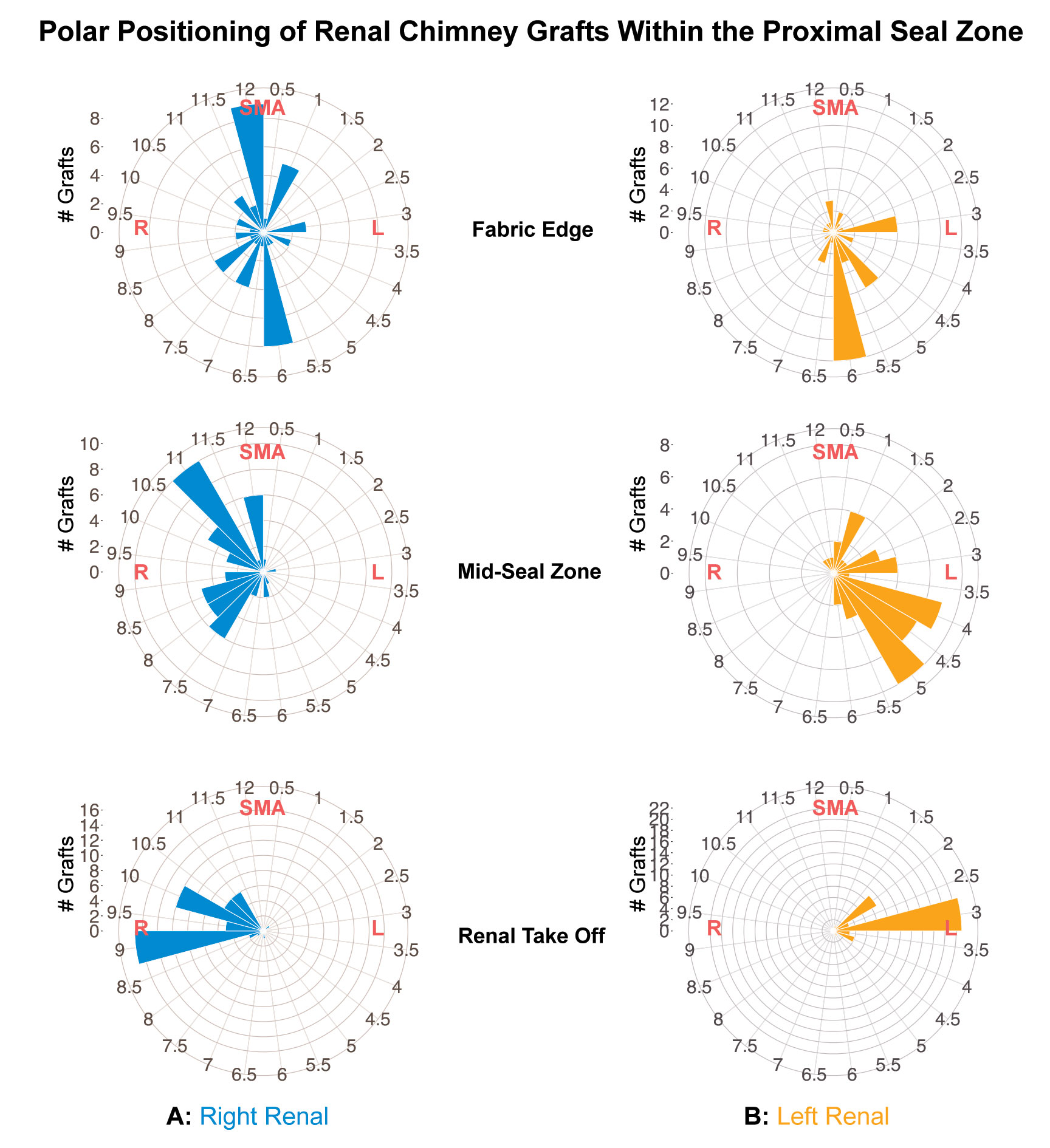Orientation of Renal Stent-Grafts within the Proximal Seal Zone Affects Risk of Early Type 1a Endoleaks Following Snorkel-Chimney EVAR
Kenneth Tran, MD, Brant W. Ullery, MD, Nathan K. Itoga, MD, Jason T. Lee, MD.
Stanford University, Stanford, CA, USA.
Objectives: To describe the 3-d orientation of renal chimney grafts within the proximal seal zone and determine whether graft position is associated with early Type 1a endoleak or renal graft compression following ch-EVAR.
Methods: Patients from 2009-2015 who underwent ch-EVAR with at least one renal chimney graft were included in this imaging analysis of post-op CT scans. By convention, 12:00 was set at the take-off of the superior mesenteric artery. Relative clock positions of chimney grafts were recorded along its trajectories at the proximal edge of EVAR graft fabric, midway of the seal zone, and at the level of entry into the renal artery ostium. Early type 1a endoleaks were defined as evidence of a peri-graft flow channel within the proximal seal zone.
Results: 62 consecutive patients underwent ch-EVAR (35 double renal, 27 single renal) for juxtarenal AAAs with a mean follow-up of 31.2 months. 18 (29%) early type 1a “gutter” endoleaks were identified. During follow-up, the majority of these (n=13, 72%) resolved without intervention, while two patients required re-intervention (3.3%). Estimated renal graft patency was 88.9% at 60 months. Right renal chimney grafts started equally anterior (39.2%) or posterior (29.4%), traversing across most commonly to the 9 o’clock position (33.3%) towards the renal ostium (Figure 1A). Left renal chimney grafts most commonly started posteriorly at the fabric edge (55.5%), traversed anterior between 3’oclock and 5’oclock, and entered at the 3’oclock position (51.1%) at the ostium (Figure 1B). Measured by the polar plane, the majority of renal chimney grafts (n=83, 85.6%) traversed <90° before reaching the renal ostium. Grafts that traversed >90° were independently associated with early Type 1a endoleaks (OR 7.5 [1.8-30.7]) even after controlling for other device and anatomic variables. Polar orientation of the chimney grafts was not associated with graft kinking/compression (p=.38) or occlusion (p=.10).
Conclusions: Renal chimney grafts which traverse >90° in polar orientation within the seal zone may be at increased risk of early Type 1a endoleaks and require more frequent imaging surveillance.

Back to 2017 Program




